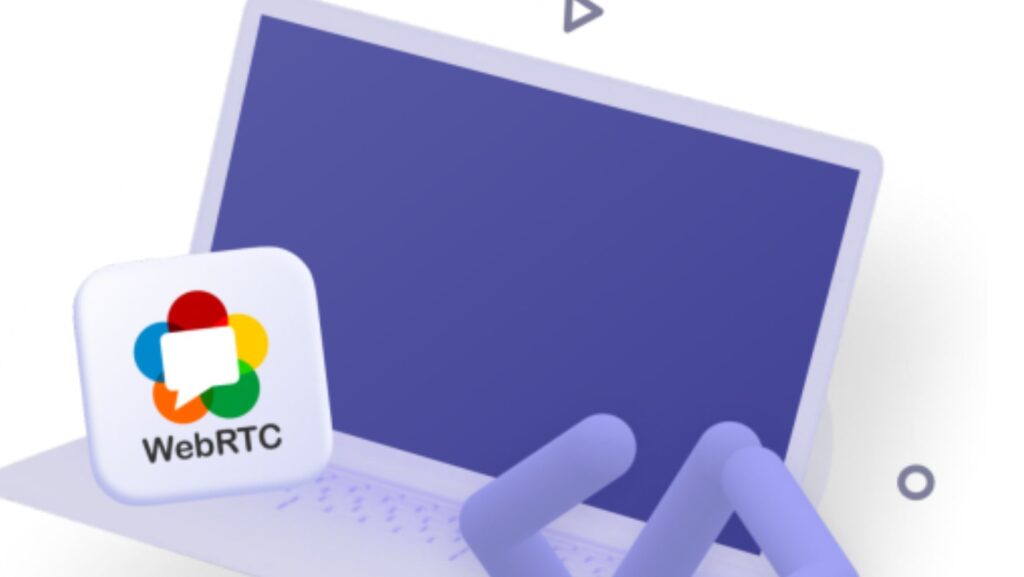In today’s digital world, being able to communicate in real time is crucial for businesses. Technologies like WebRTC are at the forefront of this shift, making it easier for companies to connect with customers and collaborate internally. For businesses looking to tap into this technology, engaging with webrtc development services can help create tailored solutions that fit their specific needs.
Geniusee is a leader in integrating WebRTC and is known for smoothly embedding advanced communication tools into business models. By teaming up with them, businesses can tackle the complexities of WebRTC implementation, ensuring strong and secure communication channels that boost operational productivity.
What is WebRTC?
WebRTC, which stands for Web Real-Time Communication, allows for direct peer-to-peer interactions through audio, video, and data channels directly via web browsers, eliminating the need for extra plugins. It uses JavaScript APIs like getUserMedia to capture media and RTCPeerConnection to manage connections, ensuring high-quality, low-latency exchanges that are vital for today’s fast-paced business world.
Real-World Business Applications
WebRTC is incredibly versatile, finding uses across many sectors. For customer service, it enables video support, letting businesses interact face-to-face with clients, which can greatly improve customer satisfaction and trust. For remote teams, WebRTC supports smooth video conferencing, keeping teams connected and productive no matter where they are.
In education and healthcare, WebRTC’s benefits are clear. Schools can hold online classes that feel like the real thing, while telehealth services use secure video calls to give patients quick access to medical professionals. In finance, secure client meetings and live trading updates are made possible, enhancing client experiences and efficiency.
The Benefits You Can’t Ignore
WebRTC offers a secure platform with end-to-end encryption, which is crucial for protecting sensitive data. This makes it particularly valuable in fields like finance and healthcare, where confidentiality is key. Additionally, WebRTC provides low latency and high-quality streaming, making sure users have a seamless experience.

Its open-source nature means developers can constantly innovate, tailoring features to fit changing business needs. This adaptability helps businesses keep up-to-date with the latest in communication technology, suitable for everything from simple chats to complex enterprise systems. Plus, its compatibility across many devices and browsers makes it a flexible choice for businesses of any size.
Challenges to Keep in Mind
Despite its many benefits, WebRTC implementation comes with challenges. Since it doesn’t have a standardized signaling protocol, setting up connections can be tricky, meaning businesses need to create custom solutions for smooth communication. Network issues can also affect performance, so a strong infrastructure is essential to maintain quality.
Businesses should also plan for flexible bitrate management to handle different network conditions effectively. This is crucial for keeping interactions smooth, no matter the environment. Integrating WebRTC into existing systems might require technical expertise, which is why working with experienced providers like Geniusee can be a huge advantage.
Industry-Specific Uses
The impact of WebRTC is felt across various industries. In retail, it’s used for video consultations, providing personalized shopping experiences that boost engagement and sales. In law, it enables secure document sharing and virtual meetings, streamlining operations and improving client relations.

In media and entertainment, WebRTC supports live streaming and broadcasting, offering viewers an engaging experience. It also helps in content creation by allowing real-time teamwork among distributed teams. In manufacturing, it facilitates real-time data exchange between machines and remote monitoring systems, improving production and reducing downtime.
Looking Ahead: The Future of WebRTC
The future of WebRTC looks bright, with continuous advancements expected to enhance its capabilities. As more businesses adopt WebRTC, innovations will likely lead to more personalized and immersive communication experiences powered by real-time data and AI-enhanced interactions.
In summary, WebRTC is a game-changer in business communication, offering new ways to innovate and operate efficiently. By partnering with experts like Geniusee, businesses can overcome implementation hurdles and fully leverage WebRTC’s potential, staying competitive in the ever-evolving digital landscape. Embracing WebRTC is key for businesses aiming to improve their communication strategies and succeed in the digital age. It not only boosts operational efficiency but also positions companies as leaders in technological innovation, ready to meet future demands.

